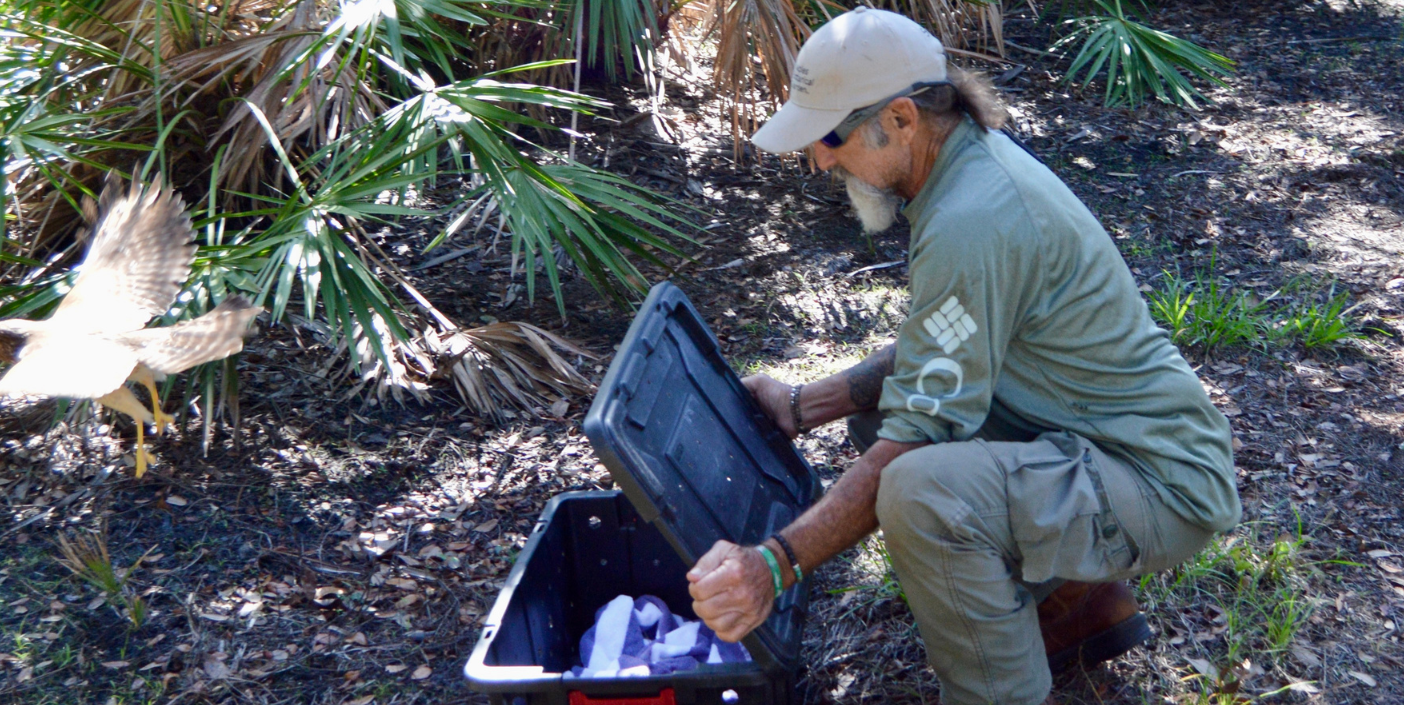
A few weeks ago, Maintenance Gardener Hank Schiff came upon a most unexpected sight in our Preserve: a red-shouldered hawk on its back, flapping its wings in distress.
Carefully, he took hold of the bird, separating and gripping its talons so the hawk could not use the appendages against its rescuer. Together with Natural Resources Associate Karen Relish, Schiff took the hawk to the von Arx Wildlife Hospital at the Conservancy of Southwest Florida.
The raptor suffered from toxicosis, an ailment frequently seen in red-shouldered hawks, according to Joanna Fitzgerald, the wildlife hospital’s director. It was not known which neurotoxin caused the condition. Toxicosis symptoms include uncoordinated movement, not moving when approached, and difficulty breathing.
“The hawk responded well to our treatment protocol and made a full recovery, allowing it to be released where it was found,” Fitzgerald said. The bird spent about three weeks in her team’s care.
Several days ago, Schiff and Relish retrieved the hawk and brought it right back to the spot where Schiff had discovered it.
“Get ready,” he said, and lifted the cover of the ventilated box used for transport. The mighty bird ascended with the speed of a sprinter and was out of eyesight within seconds.
This wasn’t Schiff’s first hawk rescue. As a boy in rural Virginia, he came across baby hawks that had fallen from their nest. He was able to save one of them and tended to it until it was ready to return to the wild.
“I love helping animals,” said Schiff, who once shared a home with 13 dogs. “I’m an animal person.”

Our staff is well-versed in how to manage the wildlife that calls the Garden home. If you encounter an injured, sick, or orphaned animal and are unsure of what to do, call the von Arx Wildlife Hospital at 239.262.2273 for guidance.
Fitzgerald further advises: “Human safety is always the top priority, so in any rescue, people need to wear eye protection (such as sunglasses), wear gloves, and use a towel so they don’t come in direct contact with the animal. Cover the animal’s head and body with the towel, and place it in a ventilated box that is securely closed. Transport it to the wildlife hospital for immediate professional help.”
 About the Author
About the Author
Jennifer Reed is the Garden’s Editorial Director and a longtime Southwest Florida journalist.

